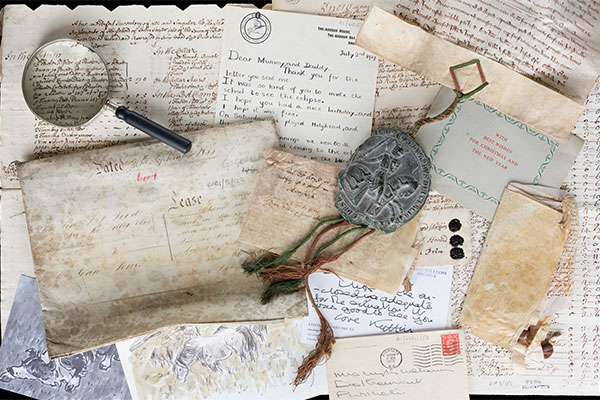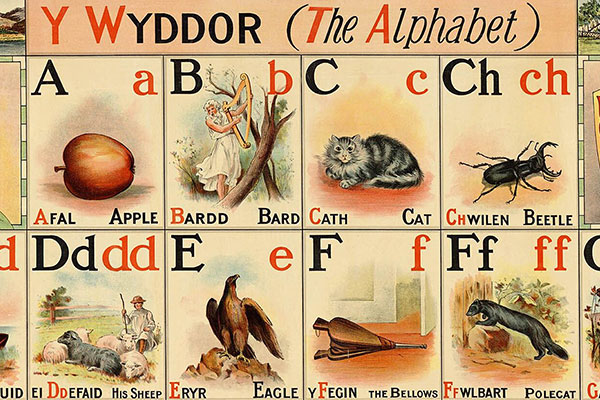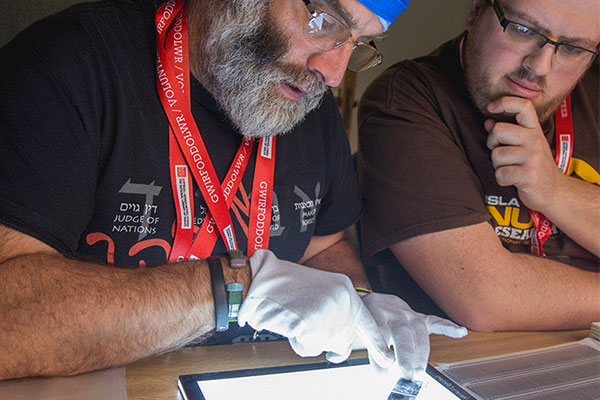Gutun Owain
The majority of the manuscript, pages 9-83, were written by Gutun Owain. He was born to a noble family in the lordship of Oswestry and was baptised Gruffudd ap Huw ab Owain. He was a student of Dafydd ab Edmwnd (fl. 1450-97) and it is said that both were present at the Carmarthen Eisteddfod of 1450. Although he is known mainly as a poet he was proficient in a number of fields. He was the most important genealogist of his time and was a member of the commission appointed by Henry VII to trace the genealogy of his grandfather Owain Tudur. He was also responsible for copying a number of the most important Welsh language texts of the Middle Ages, for example Brenhinedd y Saeson and Brut Tysilio in the Black Book of Basingwerk. He also had knowledge about the medical ideas of his time and about astrology. His knowledge is reflected in this manuscript.




